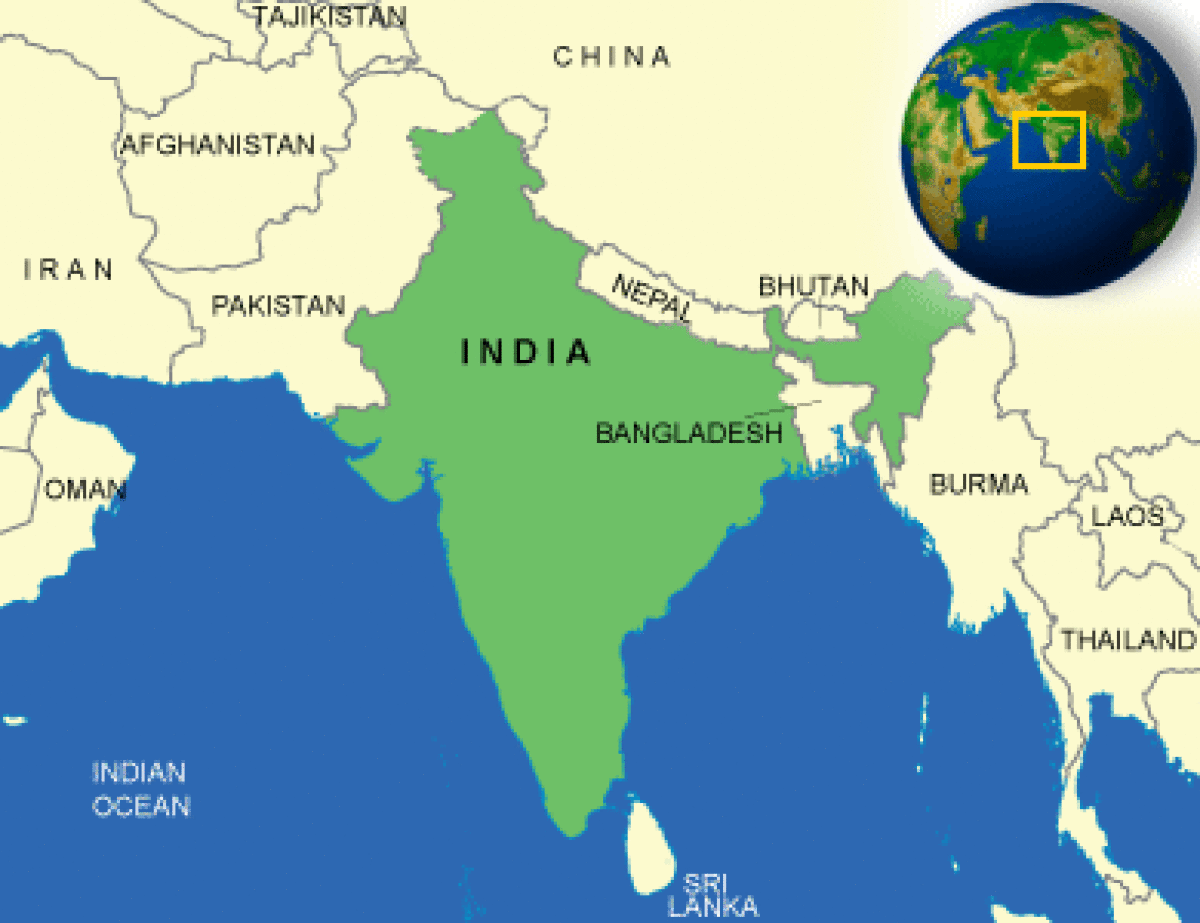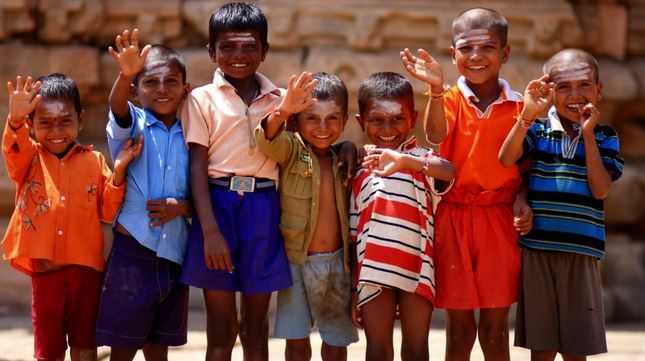India Culture Facts: Traditions and Customs of India

India Facts
Capital : New Delhi
Area: 1,269,346 sq. miles
Population: 1 billion
Main Languages: Hindi, English, and Urdu
Currency: Indian rupee (INR)
Government Type: federal republic
Location: Southern Asia, bordering the Arabian Sea and the Bay of Bengal, between Burma and Pakistan
Language: Hindi 41%, Bengali 8.1%, Telugu 7.2%, Marathi 7%, Tamil 5.9%, Urdu 5%, Gujarati 4.5%, Kannada 3.7%, Malayalam 3.2%, Oriya 3.2%, Punjabi 2.8%, Assamese 1.3%, Maithili 1.2%, other 5.9%
India has a very rich and diverse culture with a civilizational heritage of more than 5000 years. Variety is the hallmark of Indian culture. India's culture has been enriched by the successive waves of migration. The invaders brought with them their own culture which was amalgamated into Indian way of life and it gave birth to an eclectic mix which can be seen today. India's physical, religious and racial variety is reflected in its culture. This vast cultural diversity is manifested in the monuments - temple, mosques, churches, monasteries, gurudwara's etc. we have collected together some interesting facts on Indian culture.
Religions
India is the birthplace of Hinduism, Buddhism, Jainism and Sikhism, collectively known as Indian religions. India known as the land of spirituality and philosophy, was the birthplace of some religions, which even exist today in the world. India is a land of diverse religions that exist in harmony and peace. The secularism is one of the most important aspects of the country. The largest section of the population is Hindu that has an established majority in the Nation but this does not deprive followers of other religions fro influencing the society.

Festivals
If one wants to visit a multicultural land that houses an assorted range of religions, India comes up as an ideal choice. The country has a rich cultural heritage and is home to people from diverse religions. It is a universally acknowledged truth that every religion gets its own unique expression from the festivals celebrated by its followers on various occasions.
Festivals of India are celebrated throughout the country with Great Spirit and devotion. This festival reflects the traditional spirit and culture of the people of India. Religious festivals are celebrated by various communities living together in India. These fairs and festivals are a unique symbol of national integrity and pride for the people of India. India is home to numerous religious, cultural and spiritual fairs and festivals. But there are some very popular festivals which are well known and are celebrated by Indians all over the world. Holi and Diwali are few of the most famous festivals in India. Old rituals, traditions and possessions are an important part of these fairs and festivals in India. Here we have presented below a list of some of the popular fairs and festivals celebrated in India.

Food
Food is an integral part of every human culture. Chang notes that the importance of food in understanding human culture lies in its infinite variability - a variability that is not essential for species survival.
Indian food is as diverse as India. Indian cuisines use numerous ingredients, deploy a wide range of food preparation styles, cooking techniques and culinary presentation. From salads to sauces, from vegetarian to meat, from spices to sensuous, from breads to desserts, Indian cuisine is invariably complex. Harold McGee, a favourite of many Michelin-starred chefs, writes "for sheer inventiveness with milk itself as the primary ingredient, no country on earth can match India.

Clothing
The sari is the most traditional piece of clothing worn in India. It is 9 yards of cloth elegantly draped by most Indian women. It comes in a variety of colors, design and fabric so it can be worn on all occasions as well as weddings.
Kurta-pajama or salwaar-kameez is a traditional two-piece set of tunic with pants and a scarf worn casually by many Indian men and women. Children and younger adults usually wear western outfits.

Famous places
The Taj Mahal of Agra, built by Emperor Shah Jahan in memory of his beloved wife, is one of the Seven Wonders of the World and India’s most famous tourist attraction. It is a monument built completely in lovely white marble. Jaipur located in the state of Rajasthan commonly known as the Pink City of India is famous for its beautiful palaces. These palaces are massive and mostly built in pink and red stone. Guests who stay in some of these palace-like hotels are also treated like Maharajas and Maharanis (kings and queens of India). Mumbai situated in the state of Maharashtra, is one of the most important and popular cities in the world. It is compared to New York City of the United States for various reasons. Mumbai offers the best of shopping, food and entertainment. It is a must visit for tourists as well as Indians.

History
The history of India dates back to more than 5000 years. From Harrapan Civilization to present times, India has covered a long journey. The reminders of this long journey are distributed all over India. Indian has witnessed a series of invasions. From Alexander to Turks, Mughals, Dutch, French and British, Indian History is replete with instances of Invasion. Modern Indian History, which starts with the Indian freedom movement gave a new direction and inspiration to freedom movements all over the world. Check out some interesting facts about India's history.

Greetings
Namaste (Hindi), Juhar/Namaskar in Odia, Namaskar, Swagatam (Marathi) or Namaskara (Kannada) or Namaskaram (Telugu, Malayalam), Vanakkam (Tamil),Nomoshkaar (Bengali), Nomoskar (Assamese) is a common spoken greeting or salutation when people meet or a form of farewell when they depart. Namaskar is considered a slightly more formal version than Namaste but both express deep respect. It is commonly used in India and Nepal by Hindus, Jains and Buddhists, and many continue to use this outside the (Indian subcontinent).
